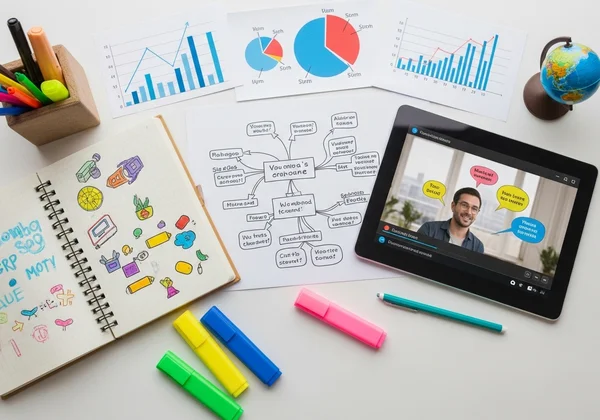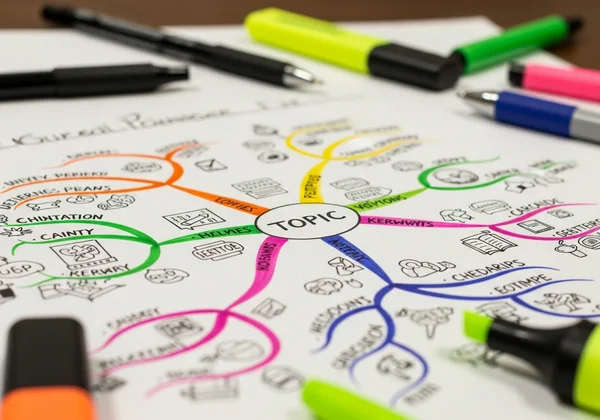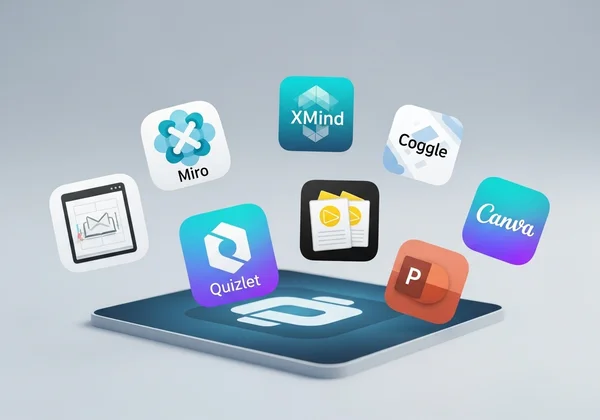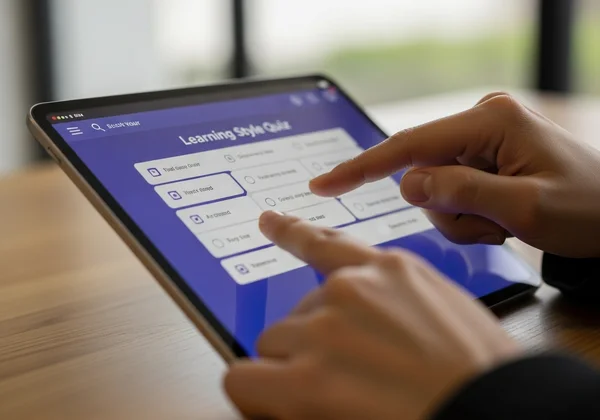Visual Learning Strategies: Unlock Your Potential with a Learning Style Quiz & Study Guide
Do you find that you remember faces better than names? Are you the person who doodles in the margins of notebooks to stay focused? If so, you might be a visual learner. Embracing your natural tendency to process information through sight can be a superpower in school, at work, and in life. This guide is packed with powerful visual learning strategies to help you study smarter, not harder. But first, have you ever found yourself asking, what is my learning style quiz? If you want to unlock your full potential, understanding your unique cognitive profile is the first and most crucial step.
Discovering your dominant learning style provides a roadmap to more effective and enjoyable learning. It replaces frustration with focus and confusion with clarity. Ready to see the difference for yourself? You can discover your learning style results with a quick and free assessment designed to pinpoint your strengths.
What Exactly is a Visual Learner?
A visual learner is someone who understands and retains information best when it is presented in a graphic or pictorial format. Instead of just hearing or reading about a concept, they need to see it. Think of charts, diagrams, mind maps, and videos—these are the tools that make abstract ideas concrete for a visual mind. Their brain is wired to decode visual information, patterns, and spatial relationships with ease.

This preference isn't just about liking pretty pictures; it's a fundamental aspect of how they make sense of the world. While others might absorb a lecture by listening intently, a visual learner will get more value from the slides, the presenter's body language, and the notes they sketch during the presentation.
Key Characteristics of Visual Learners
Do these traits sound familiar? You might be a visual learner if you:
- Are skilled at reading maps, charts, and graphs.
- Often close your eyes to visualize information to remember it.
- Prefer watching a video demonstration over reading instructions.
- Are naturally organized and appreciate a tidy environment.
- Use gestures and expressive body language when you talk.
- Enjoy drawing, doodling, or other visual arts.
- Remember vivid details about places you have been.
Understanding Your Visual Learning Preference
Recognizing that you have a visual learning preference is empowering. It's not a label that confines you but a key that unlocks better ways to learn. Most people possess a mix of learning styles—visual, auditory, and kinesthetic—but typically one style is more dominant. Understanding this dominant preference allows you to intentionally choose study methods that align with your brain's natural wiring.
The goal isn't to ignore other learning methods but to lean into your primary strength to build a solid foundation of understanding. A comprehensive visual auditory kinesthetic test can give you the precise insights needed to build your personalized learning toolkit.
Effective Study Tips for Visual Learners
Once you confirm your visual preference, you can transform your study habits. These proven study tips for visual learners will help you harness the power of sight to improve comprehension and long-term memory.
Harnessing Visual Aids: Maps, Charts & Diagrams
Don't just read a wall of text. Convert it into a visual format. Use mind maps to connect central ideas to related concepts. Create flowcharts to understand processes or cause-and-effect relationships. Turn statistics and data from a textbook into a colorful bar graph or pie chart. This act of creating a visual aid is a powerful learning tool in itself.
Color-Coding & Highlighting for Retention
A strategic approach to color can transform your notes from a monotonous block of ink into a structured guide. Assign specific colors to different themes, concepts, or levels of importance. For example, use yellow for key definitions, green for examples, and red for crucial formulas. This creates a visual logic that helps your brain categorize and retrieve information more efficiently during exams.
Visual Note-Taking Techniques (Sketchnoting, Mind Mapping)
Move beyond simple written notes. Sketchnoting combines handwriting, drawings, symbols, and visual elements like arrows and containers to create a rich, engaging summary of information. Mind mapping is another excellent technique that starts with a central topic and branches out with related ideas, creating a map of your knowledge that is easy to review at a glance.

Utilizing Video and Multimedia Resources Effectively
The digital age is a goldmine for visual learners. Platforms like YouTube, Khan Academy, and Coursera offer endless video tutorials, documentaries, and animated explanations. To maximize their benefit, be an active viewer. Pause the video to take visual notes, draw diagrams of what you're seeing, and re-watch complex segments. This active engagement is far more effective than passive consumption.
Creating a Visually Stimulating Study Environment
Your physical surroundings matter. A visual learner thrives in an organized, aesthetically pleasing space. Use a whiteboard or corkboard to display key concepts, formulas, and inspiring quotes. Keep your desk clutter-free so your mind can focus. Ensure you have good lighting. A study space that is visually calm and structured helps reduce cognitive load, freeing up mental energy for learning.
Top Tools & Resources for Visual Learners
Having the right tools can make all the difference. Here are some essential digital and physical resources to support your visual learning journey. Equipping yourself with these tools is a direct investment in your future learning success.

Recommended Apps & Software for Visual Organization
- Mind Mapping Tools: Apps like Miro, XMind, and Coggle allow you to create dynamic and collaborative mind maps, flowcharts, and diagrams.
- Digital Flashcards: Tools like Anki or Quizlet let you create flashcards that incorporate images and diagrams, making them far more effective for visual recall.
- Presentation & Design Software: Use Canva or PowerPoint not just for presentations, but as a personal tool to create visually rich study guides and summaries for yourself.
Essential Physical Study Tools & Supplies
Never underestimate the power of analog tools. Stock your desk with:
- A set of multi-colored pens and highlighters.
- Graph paper for drawing precise diagrams and charts.
- A large sketchbook for mind mapping and sketchnoting.
- Sticky notes in various colors and sizes for quick reminders and annotations.
- A personal whiteboard for brainstorming and working through problems.
Applying Visual Strategies in Real-World Scenarios
These strategies aren't just for passing tests; they are for succeeding in all areas of life. Here’s how visual learning can be applied by students, professionals, and parents.
Visual Learning in Academic Settings (School, College)
For students, visual strategies are a game-changer for academic performance. When studying for an exam, recreate diagrams from memory. For history, create a visual timeline instead of just memorizing dates. When writing an essay, use a mind map to organize your arguments before you start writing. Confirming your style with a learning style quiz for students is the perfect first step toward better grades.
Visual Learning in the Workplace & Professional Development
In the professional world, visual communication is key. Use whiteboards during meetings to map out ideas. Plan projects using visual tools like Gantt charts. When learning a new software, watch video tutorials and create your own visual cheat sheet with screenshots. Understanding your strengths through a learning style quiz for adults can help you excel in your career.
Supporting Your Visual Learner at Home (for Parents)
Parents can make a huge impact by creating a visually supportive home environment. Use a picture-based chore chart. When helping with math homework, use objects or drawings to illustrate the problem. Read books with rich illustrations and encourage your child to draw what they learned. Understanding their needs starts with a simple, free learning style quiz.
Unlock Your Visual Learning Potential Today!
You have the power to make learning more intuitive, effective, and even fun. By understanding and embracing your visual learning style, you're not just memorizing facts; you're building deep, lasting comprehension. You've now seen the strategies, the tools, and the real-world applications. The only thing left is to confirm your personal learning blueprint.

Stop struggling against your natural inclinations and start working with them. Are you ready to transform your approach to learning and unlock your true potential? Take our free quiz today to receive an instant, personalized report and begin your journey to smarter learning.
Frequently Asked Questions About Visual Learning
What kind of learner am I, and how do I confirm it?
What kind of learner am I? This is a question many of us ask. While this article provides clues, the most accurate way to confirm your learning style is with a validated assessment. A well-designed test can analyze your responses to various scenarios to identify your dominant preference. You can get a clear answer in minutes by taking our fast and free learning style quiz.
Is visual learning the most effective style?
There is no single "best" or "most effective" learning style. The most effective style is the one that is yours. Success comes from the alignment of learning strategies with personal preference. A visual learner will thrive with visual methods, while an auditory learner will excel by listening. The key is self-awareness, not trying to fit into a single mold.
Can a visual learner also use other learning styles?
Absolutely. It's rare for someone to be 100% one style. Most people are a blend of visual, auditory, and kinesthetic learning styles, with one or two being more dominant. The best learners are flexible; they use their primary style to grasp a concept and then reinforce it using other styles. For example, a visual learner might draw a diagram (visual) and then explain it out loud to a friend (auditory).
How can parents best support a visual learner at home?
The best support starts with understanding. First, confirm their style. Then, integrate visual tools into daily life: use color-coded calendars, play picture-based memory games, and encourage them to draw or build models to explain what they're learning in school. Be patient and provide them with the visual resources they need to thrive.